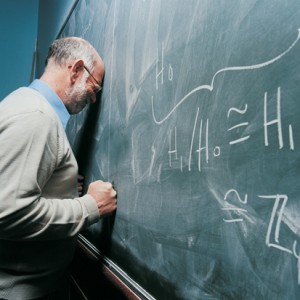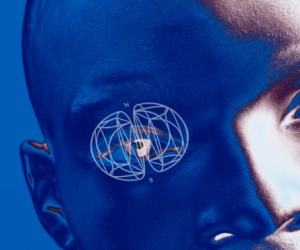Theory, Imagination & Practice…Squared
By Nir Menussi: January 14, 2011: Category Inspirations, Networks of Meaning
Integrating Science and Mysticism, Article 3
 Science is the single most successful, enduring and ever-growing human endeavor in modern history. Why should it possibly need ‘completion’ or ‘complementation’ from mysticism?
Science is the single most successful, enduring and ever-growing human endeavor in modern history. Why should it possibly need ‘completion’ or ‘complementation’ from mysticism?
In order to answer this we need to distinguish between science in the narrow sense, i.e., what goes on in research facilities and hi-tech companies, and science in a wider sense, which refers to the culture of the enlightenment in general. The culture of the enlightenment is the entrenched belief that the advance of science and the achievements of technology spell the coming of a secular ‘messianic era’, that they provide us with the ultimate understanding of the nature of things, and the ultimate tools with which to live as we should. Our argument is that while science in the narrow sense may be healthy and successful, science in this wider sense is in a state of deep crisis.
What we wish to do now is to draw a large-scale map of this crisis, or rather, the many crises it consists of. And this is how we’re going to do it: we’re going to divide the scientific sphere of ideas and activities into three main categories, and then subdivide them again according to the same threefold division, resulting in a 9-category grid. This may sound an odd way to go about it, but if you’ll bear with me, I believe you’ll find it makes perfect sense here.
The Three Levels of Science
The three categories are the three main levels constituting the scientific process, namely scientific theory (the level of ideas and their formulation), scientific imagination (the human psychological level involved in science) and scientific practice (science’s application and results).
How we arrived at this division will hopefully be the topic of another article. For now, we’ll just mention that the Hebrew word for science, mada (מדע) is the exact acronym for these three terms, when ordered practice (ma’aseh, מעשה), imagination (dimyon, דמיון) and theory (iyun, עיון)—i.e., from the bottom up, as befits science being the “fountains of the deep” (see previous article).
When subdivided as described above, the resulting 9-section grid consists of practice within practice, imagination within practice, theory within practice and so on, all the way up to theory within theory. We shall go over them one by one and see how they help us map the crisis of the enlightenment, and get a sense of how it needs complementation by a metaphysical system.
In this article we’ll only be reviewing the first and third levels, those of practice and theory, alongside their subdivisions. The level of imagination requires much more elaboration, and so we’ll dedicate the following three articles entirely to it.
Scientific Practice
Practice within Practice: The most overt science-associated crisis we are facing today is, without a doubt, the ecological crisis. A direct result of modern mass manufacturing, this global-scale crisis rhymes ominously with the metaphor presented last time, of science’s rise being like the fountains of the abyss flooding the world, except it’s not a flood of knowledge being caused by it, but a proverbial Biblical flood—an actual, physical, deadly cataclysm. This crisis—alongside new illnesses brought about by science, mass-destruction weapons, and more, form the shadow trailing behind its many benefits. It’s no surprise one of the most insistent recurring motifs in popular culture is that of the mad or irresponsible scientist unleashing some monstrous force upon the world which it cannot control: it’s an attempt to give shape to the fear lurking inside us that this has already happened.
Imagination within Practice: Another very real negative effect science has had upon the world is witnessed not in nature but in society. With the ascent of science a new utopian vision took seat in the heart of modern man: that reason and technological innovation are going to bring him final happiness and fulfillment. This utopian belief has been slowly crashing down for some sixty years now, as modern man is coming to realize that neither psychiatric drugs nor fancy cellphones, neither wealth nor health, are going to substitute his deep need for a meaningful and truthful life. This disillusionment forms a second crisis of science.
Theory within Practice: Thirdly, technology’s advance has placed before us previously undreamt of moral dilemmas. For decades, the undeclared guideline for governments and manufacturers was, “if it can be done, it should be done”. However, starting with the invention of the atom bomb and continuing with the advent of genetic engineering, this slogan is increasingly questioned. Science gave us incredible mastery over nature, but it is unable—indeed, isn’t supposed to—provide us with a shred of moral guidance as for what are the right or wrong ways to use it. More than ever, it has become clear that technological progress doesn’t entail moral progress, and that we are therefore in need of moral guidelines just like we were before science, if not more so.
Practice within Theory: Here the crisis is very straightforward: science has very nearly reached the limits of observation. It is like a man descending from a cliff who, having reached the end of his tether, is forced to gaze speculatively into the mist below. The new particle accelerator at CERN marks the last effort to delve into matter, but even it cannot go beyond experimenting with subatomic particles, levels beyond that are shrouded in the deepest of mysteries.
Imagination within Theory: Beyond the physical limitations of research, there’s a more essential problem plaguing science which has to do with the scientists themselves. Through relatively new fields of research such as the sociology of science and the psychology of science, we have recently come to realize that the scientific process is highly dependent upon its wider human context. This context affects the choice of topics researched, the preference of one explanation over another, even the metaphors being used to understand and describe the findings. All of this is due to the part imagination plays in the scientific process.
Theory within Theory: The most fundamental breakdown of all took place at the very heart of scientific reasoning, attacking the very idea of coherence. We are referring to the now famous Gödel’s incompleteness theorems, proved by German mathematician Kurt Gödel. Simply put, these theorems state that no logical system can be at once complete and consistent. If it’s complete it has to be inconsistent, and if it’s consistent it has to be incomplete. The far-reaching philosophical upshot of this is that no rational system will ever be able to prove its own axioms. In other words, to get to any reasonable worldview, you would have to take a certain leap of faith.
Coming up Next: Scientific Imagination Run Wild
Theory, Imagination & Practice…Squared,














;)
;)
;)
;)
;)
;)
;)
;)
;)
;)

Is it that 1 + 1 = 2 inconsistent or incomplete???
Always thought one needed faith to believe in that as well!!! Right???